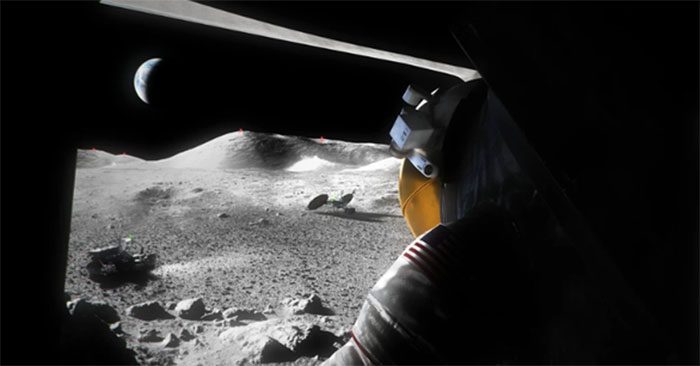NASA plans to launch the first Artemis spacecraft on August 29. The rocket and Orion spacecraft for the Artemis I mission have arrived at the launch pad at NASA’s Kennedy Space Center in Florida.

Image credit: Twitter NASA/devdiscourse.com
On August 19, the National Aeronautics and Space Administration (NASA) announced the selection of 13 potential landing sites in the South Pole region of the Moon for the upcoming Artemis III mission. This project aims to return astronauts to the Moon by 2025.
Mark Kirasich, an official from NASA’s Artemis campaign development division, stated: “Choosing these areas means we have taken a significant step closer to putting humans on the Moon for the first time since the Apollo missions.”
NASA indicated that the selected areas are located at latitude 6 in the Moon’s South Pole, a region with frozen water situated in dark craters that can receive continuous sunlight for 6.5 days—the expected duration of the Artemis III mission on the Moon.
The Apollo spacecraft, over 50 years ago, reached the equatorial regions of the Moon, where daylight lasts up to two weeks. The South Pole, however, may receive sunlight for only a few days, making this mission more challenging and limiting the launch windows for NASA.
Sarah Noble, head of lunar science research for Artemis, mentioned: “Some of the selected sites are among the oldest on the Moon, and along with the frequently dark areas, they present numerous opportunities to gain further insights into the Moon’s history through previously unstudied materials.”
Access to sources of ice and sunlight is critical for longer stays on the Moon, as it will provide a power source and minimize temperature fluctuations. Unlike the Apollo missions, which ended in 1972, Artemis is designed to establish a lasting presence on and around the Moon.
According to NASA’s exploration scientist Jacob Bleacher, “Water on the Moon is invaluable from a scientific perspective and also serves as a resource because it allows us to extract oxygen and hydrogen for life support systems and fuel.”
NASA explained that the selected areas were chosen with consideration of the timing for Artemis III. Specifically, “each landing site will correspond to a launch window, so having multiple landing sites will ensure flexibility in launch timing throughout the year.” Furthermore, each selected site offers scientific benefits and has been evaluated based on terrain, communication, lighting conditions, and their ability to meet scientific objectives.
NASA is preparing to launch the first Artemis spacecraft on August 29. This mission, known as Artemis I, will mark the first time NASA launches the Space Launch System rocket, which can carry an Orion crew module designed for astronauts, although no astronauts will be aboard for this flight. The spacecraft will be launched into lunar orbit for approximately 42 days.
The rocket and Orion spacecraft for the Artemis I mission arrived at launch pad 39B at NASA’s Kennedy Space Center in Florida on August 17.





















































